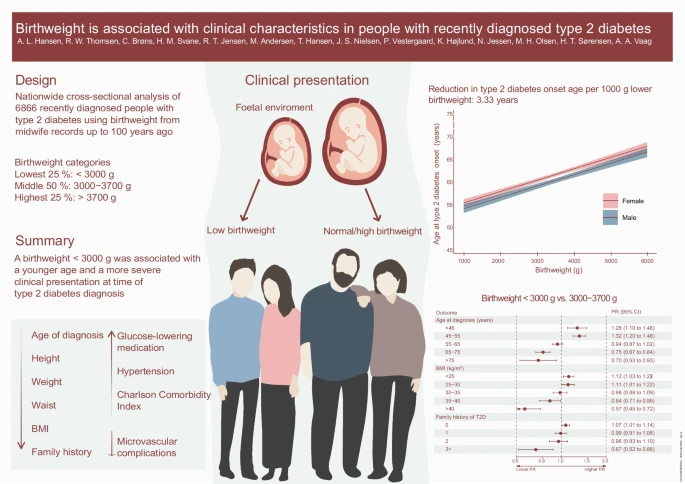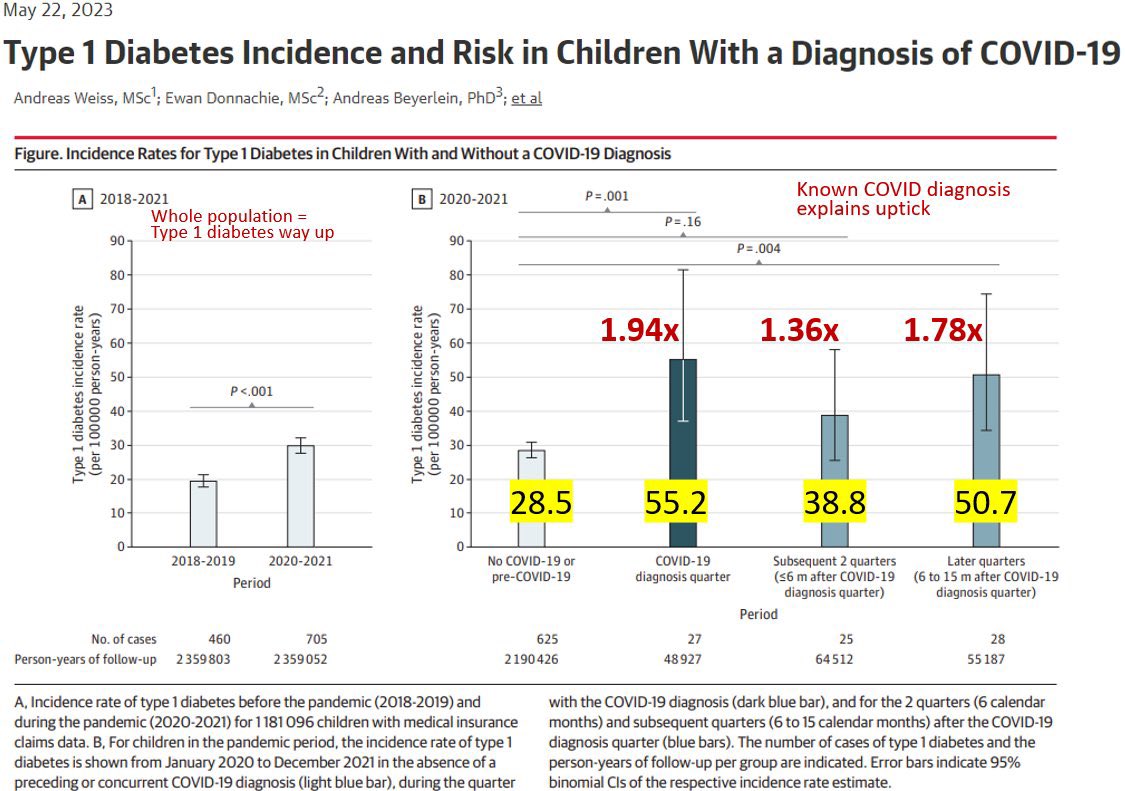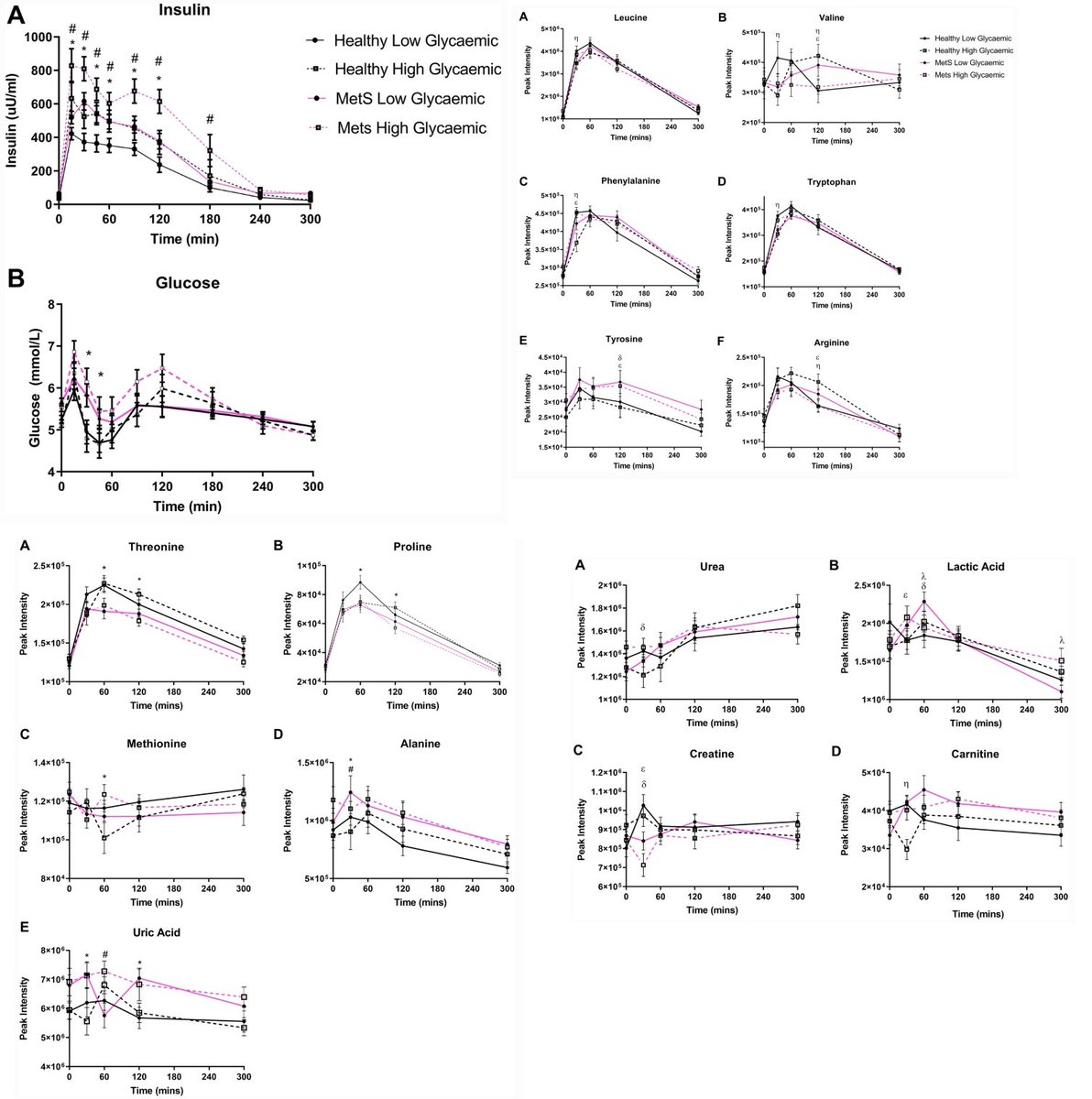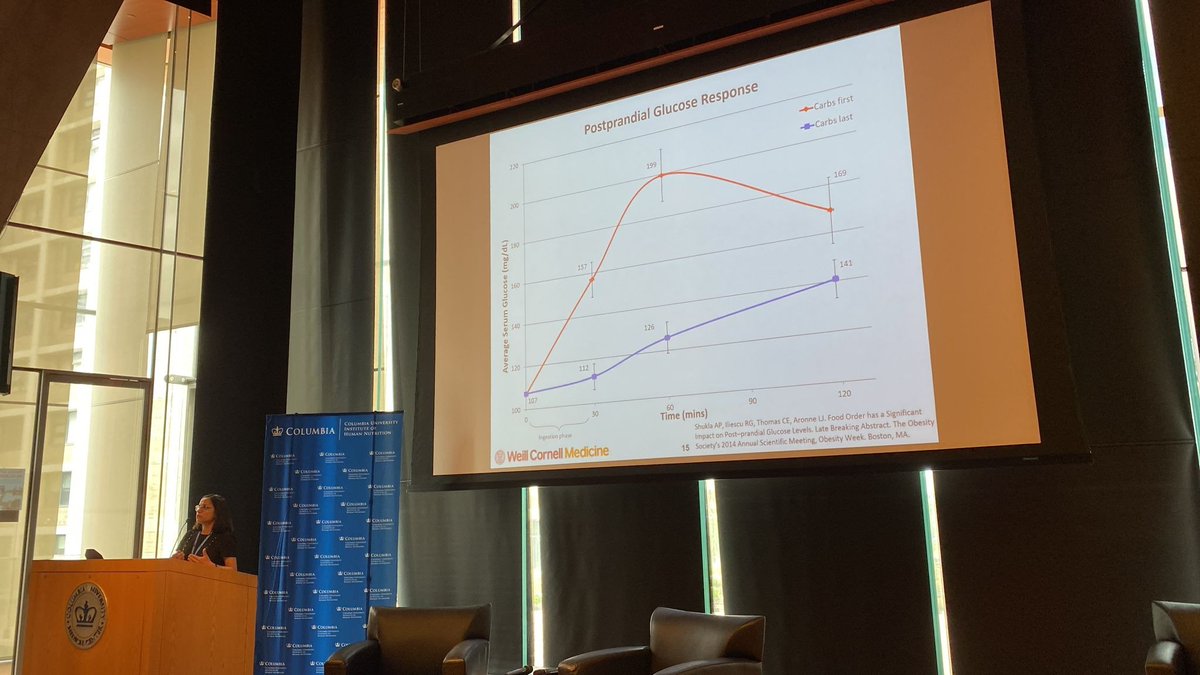Discover and read the best of Twitter Threads about #Diabetes
Most recents (24)
1a) Welcome to a 🆕#accredited #tweetorial on the importance of time in range #TIR in #diabetes . . . with additional emphases on #primarycare and on practice in 🇨🇦.
#FOAMed #endotwitter #MedEd @MedTweetorials #nephtwitter #cardiotwitter
#FOAMed #endotwitter #MedEd @MedTweetorials #nephtwitter #cardiotwitter
1b) Hence we welcome2⃣ expert faculty from Canada: Ilana Halperin @ilanajhalperin, academic endocrinologist at @Sunnybrook and @uoftmedicine, and Noah Ivers @NoahIvers, #familydoc & researcher at Women's College Hospital @UofT 



2) Earn 0.75hr 🆓CE/#CME by following this🧵! This program is supported by an unrestricted educational grant from Sanofi Canada and is intended for #HCPs. Statement of accreditation & faculty disclosures at cardiometabolic-ce.com/disclosures/.
And so we begin . . .
And so we begin . . .
Here, a triple agonist that interacts with GLP-1, neuropeptide Y1&Y2 receptors, regulated insulin secretion in rat and human pancreatic islets, promoted insulin-independent Y1-R-mediated glucose uptake in rat muscle tissue ex vivo and reduced food intake and body weight in rats. 

- Mechanisms underlying long-term sustained weight loss and glycemic normalization after obesity surgery include changes in gut hormone levels, including glucagon-like peptide 1 (GLP-1) and peptide YY (PYY).
- PYY1–36 is a gut hormone that binds to the Y1-R in pancreatic islets and central nervous system nuclei that control appetite regulation in the brain including the brainstem area postrema and nucleus tractus solitarius, where it has an orexigenic effect.
Here, despite younger age at diagnosis, lower prevalence of obesity and diabetes family history, individuals with recently diagnosed type 2 diabetes who had a low birthweight were more likely to have greater use of glucose-lowering medications and a larger burden of comorbidity. 

- Low birthweight is a risk factor for type 2 diabetes but it is unknown whether low birthweight is associated with distinct clinical characteristics at disease onset.
- This study examined whether a lower or higher birthweight in type 2 diabetes is associated with clinically relevant characteristics at disease onset.
The findings of this study suggest that inflammation (glycated proteins and small:total HDL particle ratio) and muscle metabolism (creatinine, creatine) may play a substantial role in the development of type 2 diabetes. 

- The aim of this study was to combine nuclear magnetic resonance-based metabolomics and machine learning to find a glucose-independent molecular signature associated with future type 2 diabetes mellitus development.
- A case-control design nested in a population-based cohort (Di@bet.es study) was used in this study.
Every year, exposure to #AirPollution causes 7 million premature deaths.
From forest fires to smog hanging over cities and smoke inside the home, the #ClimateEmergency threatens our health and our planet.
📌 bit.ly/3FLOJiu
From forest fires to smog hanging over cities and smoke inside the home, the #ClimateEmergency threatens our health and our planet.
📌 bit.ly/3FLOJiu

In children 🧒🏽 👶🏻 👧🏾, exposure to #AirPollution can cause:
🫁 reduced lung growth & function
🗣️ respiratory infections
🩺 aggravated #asthma
📌 bit.ly/3FLOJiu
🫁 reduced lung growth & function
🗣️ respiratory infections
🩺 aggravated #asthma
📌 bit.ly/3FLOJiu

In adults, ischaemic heart disease and stroke are the most common causes of premature death attributable to outdoor #AirPollution. Other effects include #diabetes and neurodegenerative conditions.
📌 bit.ly/3FLOJiu
📌 bit.ly/3FLOJiu

Ron Davis: "25% #MECFS patients have MS."
GeNeuro: "25% of longhaulers have a reactivation of the HERV-W protein."
My logic:
In ME: EBV reactivates HERV-W, and this leads to MS.
In LC: Sars-Cov-2 leads to EBV reactivation, EBV reactivates HERV-W, resulting in MS.
#LongCovid
GeNeuro: "25% of longhaulers have a reactivation of the HERV-W protein."
My logic:
In ME: EBV reactivates HERV-W, and this leads to MS.
In LC: Sars-Cov-2 leads to EBV reactivation, EBV reactivates HERV-W, resulting in MS.
#LongCovid
Cumulative Roles for Epstein-Barr Virus, Human Endogenous Retroviruses, and Human Herpes Virus-6 in Driving an Inflammatory Cascade Underlying MS Pathogenesis
frontiersin.org/articles/10.33…
frontiersin.org/articles/10.33…

In this one, a higher cardiovascular risk, as assessed by the Framingham 10‐year cardiovascular disease risk score, was associated with poorer cognitive function among older adults living in the US. 

- The Framingham 10‐year cardiovascular disease risk score is based on age, sex, smoking, total cholesterol, high‐density lipoprotein‐cholesterol, blood pressure, and diabetes.
- It was found to be associated with lower cognitive function among older adults, including overall cognition and particular domains of cognition, such as executive function and processing speed, and immediate and delayed memory.
1) Welcome to a 🆕accredited tweetorial from @cardiomet_CE! We welcome back expert faculty @ChristosArgyrop to discuss screening for #CKD in pts w/ #T2D & the role of routine assessment for #microalbuminuria as an effective diagnostic, risk stratification, & patient ed tool.
2) Christos Argyropoulos MD, PhD @ChristosArgyrop is Division Chief, Nephrology @UNMHSC. #CKD is chronic #kidneydisease, #ESKD is end-stage kidney disease.
#FOAMed #nephtwitter #cardiotwitter @MedTweetorials @NephUCommunity @ISNkidneycare @KidneyDiseaseFm
#FOAMed #nephtwitter #cardiotwitter @MedTweetorials @NephUCommunity @ISNkidneycare @KidneyDiseaseFm

3) This program is intended for #HCPs and is supported by an unrestricted educational grant from Bayer. Statement of accreditation & faculty disclosures at cardiometabolic-ce.com/disclosures/.
FOLLOW US for more expert-authored #tweetorials and earn #MedEd
FOLLOW US for more expert-authored #tweetorials and earn #MedEd
In this one, both an elevated lipid accumulation product (LAP) and an visceral adiposity index (VAI), were associated with an increased risk for early-onset type 2 diabetes among young Chinese adults.
- The lipid accumulation product (LAP) is a marker designed to measure cardiovascular disease risk factors that integrates waist circumference, an indicator of abdominal obesity, and triglyceride levels.
* LAP index (females)=TG (mmol/L)×(WC [cm]−58)
* LAP index (males)=TG (mmol/L)×(WC [cm]−65)
* LAP index (males)=TG (mmol/L)×(WC [cm]−65)
Thanks for playing the anatomy game everyone
Many mentioned the skin as 1 of their 5 organs
Some mentioned the gut (intestine/bowel)
There’s another organ that bridges the skin and gut, which nobody has mentioned …
Some mentioned the gut (intestine/bowel)
There’s another organ that bridges the skin and gut, which nobody has mentioned …
Food addiction is real and is related to #obesity and #diabetes
1. Food #addiction (FA) syndrome can be diagnosed by using Yale Food Addiction Scale (YFAS). There are 11 possible symptoms, which can be used to diagnose FA, as well as grade its severity.
#Diet #MedTwitter
1. Food #addiction (FA) syndrome can be diagnosed by using Yale Food Addiction Scale (YFAS). There are 11 possible symptoms, which can be used to diagnose FA, as well as grade its severity.
#Diet #MedTwitter

2. Clinical diagnosis of food addiction (FA)
Individuals can meet a “diagnostic” score for FA on the current versions of the YFAS by endorsing at least two of the 11 behavioral indicators of addiction plus clinical impairment/distress.
#psychtwitter
Individuals can meet a “diagnostic” score for FA on the current versions of the YFAS by endorsing at least two of the 11 behavioral indicators of addiction plus clinical impairment/distress.
#psychtwitter
3. Severity of Food addiction
Severity thresholds for this “diagnostic” score are defined by the number of symptoms endorsed
(mild: 2–3 symptoms;
moderate: 4–5 symptoms;
severe: 6–11 symptoms)
Severity thresholds for this “diagnostic” score are defined by the number of symptoms endorsed
(mild: 2–3 symptoms;
moderate: 4–5 symptoms;
severe: 6–11 symptoms)
Type 2 diabetes is associated with increased risk of developing dementia
1. Those diagnosed with diabetes before age 60 years had a nearly threefold increased risk for dementia compared to those who never developed diabetes, as per a recent study.
#MedTwitter #diabetes twitter.com/i/web/status/1…
1. Those diagnosed with diabetes before age 60 years had a nearly threefold increased risk for dementia compared to those who never developed diabetes, as per a recent study.
#MedTwitter #diabetes twitter.com/i/web/status/1…

2. Those aged 60-69 years at diabetes diagnosis had 73% higher risk of developing dementia and those aged 70-79 years at diabetes diagnosis had 23% higher risk of developing dementia.
The relationship with dementia was not significant for those aged 80 years and older.
#dementia
The relationship with dementia was not significant for those aged 80 years and older.
#dementia
3. Mechanisms include glucose toxicity, insulin resistance & microvascular dysfunction of the central nervous system.
Glucose toxicity and microvascular dysfunction are associated with increased inflammatory & oxidative stress, leading to increased blood–brain permeability.
Glucose toxicity and microvascular dysfunction are associated with increased inflammatory & oxidative stress, leading to increased blood–brain permeability.
Just doing some digging. #Pain is extremely nuanced. And the approach should also. W my kids #health & #pain there has been continued lack of knowledge, assumptions, & unwillingness to understand.
➡️#Anatomy of those that had #TPAIT & lack of understanding
by many docs 1
➡️#Anatomy of those that had #TPAIT & lack of understanding
by many docs 1
how this can impact #pain
➡️ Not identify or understanding impact of #MalabsorptionSyndrome
➡️Assumption that removal of #pancreas should immediately ‘solve’ issue of #ChronicPain
➡️ #GastricEmptying issues
➡️ Age of my kids (too young to have #pain)
➡️ Lack of 2
➡️ Not identify or understanding impact of #MalabsorptionSyndrome
➡️Assumption that removal of #pancreas should immediately ‘solve’ issue of #ChronicPain
➡️ #GastricEmptying issues
➡️ Age of my kids (too young to have #pain)
➡️ Lack of 2
understanding & identification of #MedicalTrauma
➡️T3c #Diabetes
➡️ Impact of #NASH on #pain & options for #care
There are numerous factors that are critical in #Treating an #ChronicPain in #Individuals. They list of few listed above that are factors w my kids, have often 3
➡️T3c #Diabetes
➡️ Impact of #NASH on #pain & options for #care
There are numerous factors that are critical in #Treating an #ChronicPain in #Individuals. They list of few listed above that are factors w my kids, have often 3
#Apologies can be steps towards assisting in #healing #medical #trauma. When my daughter was in @SanfordHealth for 2 months, virtually #secluded bc of accusations by #hospital administration that she causes her diabetic crisis a #hospitalist & #diabetic counselor accused 1
her of ‘stashing’ #Insulin in room. All visitors searched. No items in room unless searched - camera in room 24/7 YET she is accused of injecting #Insulin. My daughter again attempted to educate on post #TPAIT. After additional days, the #Diabetic #Counselor came back & 2
#apologized acknowledging how hard it was to control her #diabetes. It’s hard control when she is at #Baseline but if she is sick nightmare. That #apology meant the world 🌎 to my daughter. She continued to work w this #counselor throughout stay & after. YET #PatientRelations 3 

Inzidenz und Risiko von Typ-1-#Diabetes bei Kindern mit einer #COVID19-Diagnose
Daten der Bayerischen Kassenärztliche Vereinigung: Eine COVID-19-Diagnose bei Kindern in Bayern war mit einer erhöhten Inzidenz von Typ-1-Diabetes seit 2020 verbunden.
#Corona #ProtectTheKids
Daten der Bayerischen Kassenärztliche Vereinigung: Eine COVID-19-Diagnose bei Kindern in Bayern war mit einer erhöhten Inzidenz von Typ-1-Diabetes seit 2020 verbunden.
#Corona #ProtectTheKids

Looking for help with a rising A1C while keto? I’m 5 yrs in, lost 122 lbs and now maintenance. A1C was 5.5 when I started & has slowly crept up. Now at 5.9! I don’t understand & w/a family history of diabetes down my dad’s side am worried. #keto #lchf #diabetes What to do?
2 Fasting glucose runs between 95 and 102. I’ve never had fasting insulin checked. I already cycle between berberine and myo-inositol. I do have Hashimoto’s, not sure if that’s a factor. I see my doc on Friday, who is generally supportive of #keto but not super knowledgeable.
3 Wondering if I should ask for an Rx for a CGM and see if I can identify if it’s something in my diet? Only thing that’s changed over the 5 yrs that I can think of is that I’ve gradually drifted higher protein. I run 2-3 x/week and lift weights 2-3 x/week + 1 yoga class + walks.
This week is #MentalHealthAwarenessWeek
Today’s short thread is about how living with #diabetes can affect psychological well-being🧵
Plus how #HCPs can effectively assess and support people living with the condition👩
Today’s short thread is about how living with #diabetes can affect psychological well-being🧵
Plus how #HCPs can effectively assess and support people living with the condition👩
1)
Living with #diabetes increases the risk of variable mental health conditions.
For this thread, we will be focusing on #depression , #anxiety and #diabetesdistress🔎
Living with #diabetes increases the risk of variable mental health conditions.
For this thread, we will be focusing on #depression , #anxiety and #diabetesdistress🔎

2)
The ‘Diabetes is Serious Report’ led by @DiabetesUK highlighted that almost half (47%) of people with #diabetes experience difficulties managing their condition.
Those from more deprived areas are at a higher risk🔼
The report is available at:
…production.s3.eu-west-1.amazonaws.com/resources-s3/p…
The ‘Diabetes is Serious Report’ led by @DiabetesUK highlighted that almost half (47%) of people with #diabetes experience difficulties managing their condition.
Those from more deprived areas are at a higher risk🔼
The report is available at:
…production.s3.eu-west-1.amazonaws.com/resources-s3/p…
2 years ago I had my 2nd @ASTRAZENECAUK #COVIDVACCINE
Within hours there was a burning feeling going from my trunk towards my face
An increase in intense itching, pins & needles
Vibrations in my foot, leg & thigh
Tight feeling going around my chest, ribs & back
#VaccineInjuries
Within hours there was a burning feeling going from my trunk towards my face
An increase in intense itching, pins & needles
Vibrations in my foot, leg & thigh
Tight feeling going around my chest, ribs & back
#VaccineInjuries
Nerve pain down my neck, I thought I had shingles
shooting pains in my legs, arms & face
Increase in joint pain
Increase in fatigue
A sort of trembling inside my trunk
My thinking got worse, I was having to practice in my mind what I want to say
& other symptoms I can’t remember
shooting pains in my legs, arms & face
Increase in joint pain
Increase in fatigue
A sort of trembling inside my trunk
My thinking got worse, I was having to practice in my mind what I want to say
& other symptoms I can’t remember
Why did I have the 2nd #COVIDVACCINE after having problems after the 1st?
Initially a lot of the original symptoms were thought to be caused by my #diabetes so I was advised to have the 2nd one
But after the increase in symptoms after the 2nd, we knew..
Initially a lot of the original symptoms were thought to be caused by my #diabetes so I was advised to have the 2nd one
But after the increase in symptoms after the 2nd, we knew..
Statins, given like Halloween candy to those with >10% risk of CVD, can cause insulin resistance & diabetes.
A prime example of "double think".
This 🧵 explores how statins impede insulin sensitivity & damage our pancreas.
#statins #diabetes #T2DM #CVD #cholesterol
A prime example of "double think".
This 🧵 explores how statins impede insulin sensitivity & damage our pancreas.
#statins #diabetes #T2DM #CVD #cholesterol

Let's start off by reminding ourselves that diabetes and the broader category of metabolic syndrome is one of the leading risk factors for CVD.
Any drug that claims to be protective of CVD, should not be impeding insulin sensitivity.
Any drug that claims to be protective of CVD, should not be impeding insulin sensitivity.
Interesting to see anti #obesity and #diabetes #medication management from the perspective of PharmDs
I'm always pro-collaborative care!
Here are some learning points and fact checks:
#AACE2023 #endocrine #endocrinology #pharmacology
1/
I'm always pro-collaborative care!
Here are some learning points and fact checks:
#AACE2023 #endocrine #endocrinology #pharmacology
1/
- "Tirzepatide is a dual agonist"
👉It ↑GIP activity but GLP-1R agonism is less than that of endogenous GLP-1
- "Hypoglycemia is not a concern if you're not on insulin"
👉Risk of hypoglycemia ~1.4% vs. 0.2% in placebo in SURMOUNT-1
nejm.org/doi/full/10.10…
2/
👉It ↑GIP activity but GLP-1R agonism is less than that of endogenous GLP-1
- "Hypoglycemia is not a concern if you're not on insulin"
👉Risk of hypoglycemia ~1.4% vs. 0.2% in placebo in SURMOUNT-1
nejm.org/doi/full/10.10…
2/
- "In this pt with uncontrolled #diabetes, A1c 7.4, we decreased glargine by 10% [when we started tirzepatide]"
👉 Not sure where the evidence is here, but the SURPASS-5 trial protocol reduced basal by 20% in participants with baseline A1c<8
jamanetwork.com/journals/jama/…
3/
👉 Not sure where the evidence is here, but the SURPASS-5 trial protocol reduced basal by 20% in participants with baseline A1c<8
jamanetwork.com/journals/jama/…
3/

@alpanashuklamd et al examined the effect of macronutrient sequencing (carbs first vs carbs last) in ppl with diabetes, prediabetes, or gestational diabetes
This study looked at those with prediabetes:
dom-pubs.onlinelibrary.wiley.com/doi/abs/10.111…
2/
This study looked at those with prediabetes:
dom-pubs.onlinelibrary.wiley.com/doi/abs/10.111…
2/
Sugar sweetened beverages (SSBs) are associated with higher risk of heart diseases & death in people with type 2 diabetes (T2D)
1. Drinking coffee, tea or plain water, on the other hand, reduced the risk of heart diseases and death, in a long-term prospective study.
#Medtwitter
1. Drinking coffee, tea or plain water, on the other hand, reduced the risk of heart diseases and death, in a long-term prospective study.
#Medtwitter

2. Full fat milk consumption was associated with a higher risk of cardiovascular diseases (CVDs) and death in people with Type 2 diabetes (T2D).
Low fat milk consumption, on the other hand, reduced the risk of CVDs and death.
Low fat milk consumption, on the other hand, reduced the risk of CVDs and death.
3. Increase in consumption of coffee, tea or low fat milk (versus no change in consumption) after the diagnosis of diabetes, resulted in further reduction in the incidence of cardiovascular diseases and death.
doi.org/10.1136/bmj-20…
doi.org/10.1136/bmj-20…
The findings of this one suggest that the glycaemic load of a meal is not a major determinant of postprandial response, with a greater impact exerted by the metabolic health of the individual. 

- The aim of this study was to perform an acute cross-over intervention to examine the interactive actions of meal glycaemic load on the dynamic responses of the plasma metabolome in overweight females.
- Postmenopausal women with a mean age of 63 yeras ingested two differing high-carbohydrate test meals (73 g carbohydrate; 51% energy) composed of either low glycemic index or high glycemic index foods in a randomised sequence.
Here, high intakes of sugar sweetened beverages were associated with higher all cause mortality, cardiovascular disease incidence and mortality, while intakes of coffee, tea, water and low fat milk were inversely associated with all cause mortality in adults with type 2 diabetes. 

- This study prospectively investigated individual beverage consumption after a diagnosis of type 2 diabetes mellitus, as well as changes in individual beverage consumption before and after the diagnosis, in relation to subsequent risk of cardiovascular disease and mortality...
...among adults with type 2 diabetes participating in the Nurses’ Health Study and Health Professionals Follow-Up Study in the United States.








